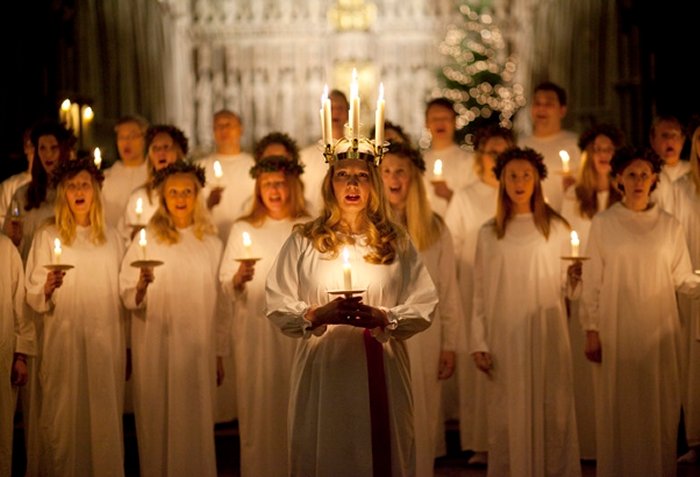
In modern American culture, "the holiday season" references the five-ish weeks between Thanksgiving and New Year's Day. Included in that time are three of our most popular traditional gatherings, with turkey and football in late November; lights and gifts in mid- to late December; and champagne and merrymaking to ring in the New Year.
But the tradition of holding a festival on or around the winter solstice dates back centuries, and is still observed in many cultures around the world today. From European Christmas-adjacent celebrations with a twist, to Asian traditions highlighting the duality of night and day, here is your chance to dive in to some of the more interesting winter holidays around the world.
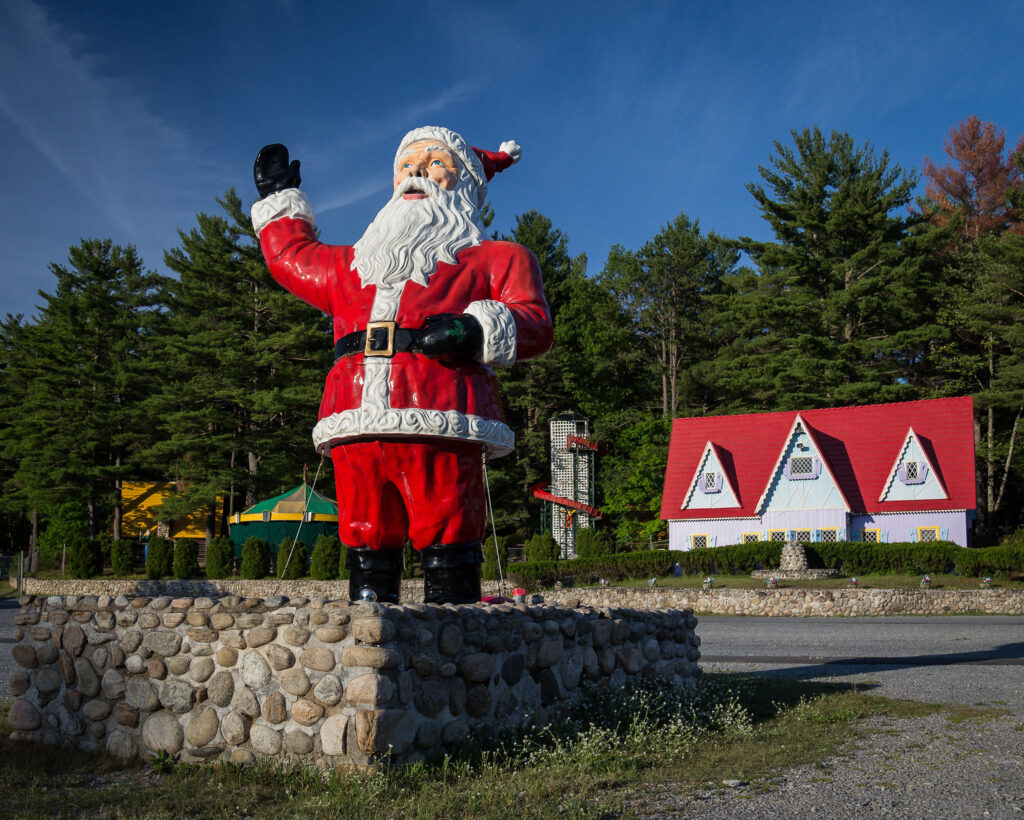
The tradition of Santa Claus comes from the Christian Saint Nicholas. Source
We'll start with a name you might recognize. Celebrated in many European countries during the month of December, St. Nicholas Day recognizes the Christian saint whose life inspired the tradition of Santa Claus. Hailing from the Greek city of Myra in Asia Minor, Nicholas was known for his charity towards the poor, his miraculous feats to save the lives of sailors and children, and his secret gift-giving which inspired the Santa tradition.
Saint Nicholas Day is celebrated on December 6 in Western Christian nations, and December 19 in Eastern Orthodox nations, to commemorate the day of the saint's death. In many countries, people often leave shoes out overnight for family and friends to fill with small gifts. Dutch children leave out a clog filled with hay and a carrot for Nicholas's horse, while kids in the Ukraine receive a small gift under their pillow if they've been good that year. It's clear to see where the Santa Claus tradition got its start!
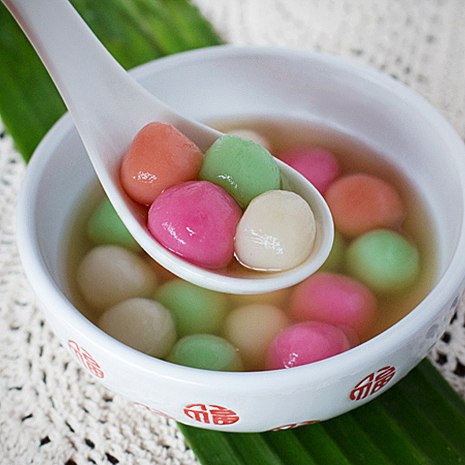
Many Asian cultures enjoy the traditional Dongzhi rice balls. Source
The Dongzhi Festival is celebrated in China, Japan, and Korea around the Winter Solstice. The festival's name translates to either "winter arrives" or "the extreme of winter," as Dongzhi celebrates the transition towards longer days and the return of a sense of balance and harmony between day and night. It is a day of family gathering and feasting, where the main tradition includes making and enjoying tangyuan, brightly colored rice balls (pictured above).
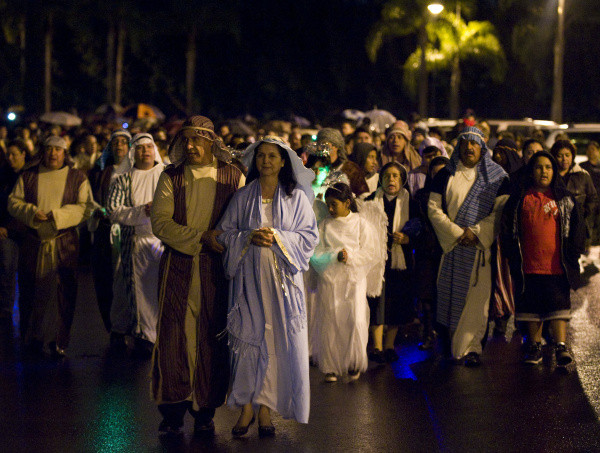
A hundreds-strong Las Posadas procession in California. Source
The holiday of Las Posadas ("the inns") originated in Spain as a Christian holiday celebrating the nativity story of Jesus Christ. Now celebrated in much of Latin America, as well as by Hispanic folks in the U.S., this nine-day holiday (Dec 16-24) pays homage to the nine-month pregnancy of the Virgin Mary in Christian tradition.
The main attraction of Las Posadas is a pageant/processional, where two people dress as Mary and Joseph and lead a group of angels, shepherds, musicians, and followers from house to house while holding a candle. Certain houses are designated as “inns”, and the procession enters these homes to pray around a Nativity scene. On the final night, Christmas Eve, the procession gathers for an evening of caroling, feasting, and piñata-breaking.
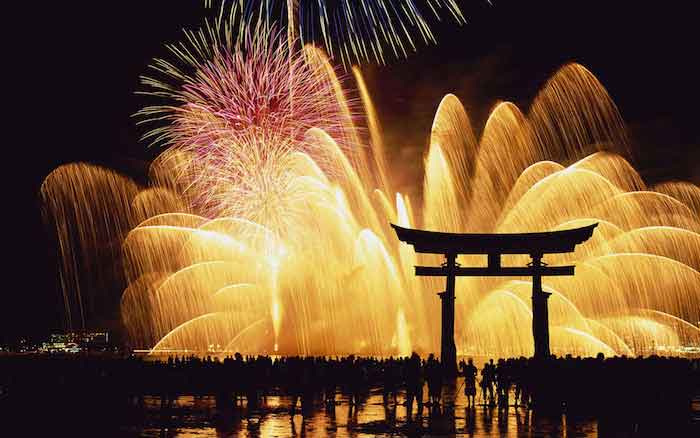
Fireworks over Japan for Shogatsu. Source
Shogatsu, which is also known as Ōmisoka and ōtsugomori, is the traditional Japanese New Year celebration. It was originally held on the final day of the 12th lunar month, but since Japan now uses the Gregorian calendar, they have adapted this tradition to coincide with December 31.
Rather than just a one-night celebration as in the U.S., the New Year festival in Japan lasts several days, and schools are closed for up to a week. During this period, Japanese people send postcards to friends and family (similar to holiday cards in the U.S.), prepare and eat a selection of specially prepared food dishes, and enjoy a number of shows and spectacles both in person and on television. At midnight on New Year's Day, Buddhist temples ring their bells 108 times (to symbolize a purifying of the 108 sins inherent in every person), fireworks are set off, and a huge number of Japanese folks attend ceremonies at shrines or religious institutions on the first of the year.

A choir led by Saint Lucy celebrates this Christian holiday. Source
Another in a procession of traditional Christian holidays, Saint Lucy’s Day is celebrated mostly in Scandinavia, along with some parts of Italy and Dalmatia. December 13 marks the Feast of Saint Lucy, when folks celebrate the story of this 3rd-century martyr from Syracuse, Sicily, who brought food and light to persecuted Christians hiding in a series of catacombs.
In the Nordic countries, Saint Lucy’s Day brings with it a focus on light; and many schools, churches, and towns elect their own “Lucy” to walk at the head of a candle-bearing processional during their Saint Lucy’s Day celebration. In Sweden, a national “Lucy” is chosen from a group of regional winners, and many of these Lucies visit shopping malls, churches, and other public places to sing and hand out cookies.
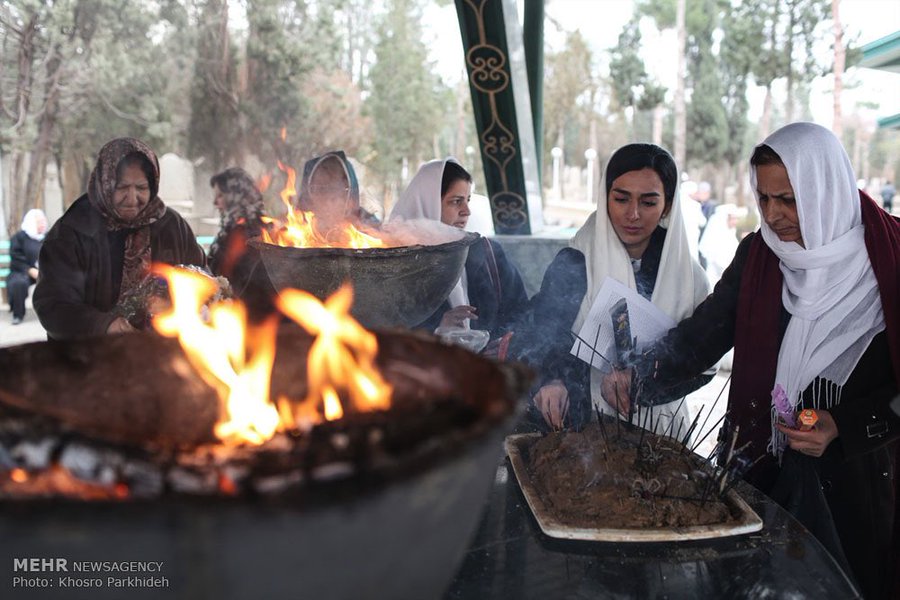
Followers of Zoroaster convene for Zartosht No-Diso. Source
Now here’s one you may not have heard of before. Zartosht No-Diso is the most important day of remembrance in Zoroastrianism, an ancient religion that traces its roots back further than almost all other organized world faiths. Zoroastrians (of which there are some 110,000 remaining, mostly in Asia) mark December 26 as the date of the passing of Zoroaster, the ancient Iranian spiritual leader who started the religion around the second century BCE. Rather than mourning their prophet’s death, Zoroasters attend small gatherings and listen to lectures about his teachings and works.
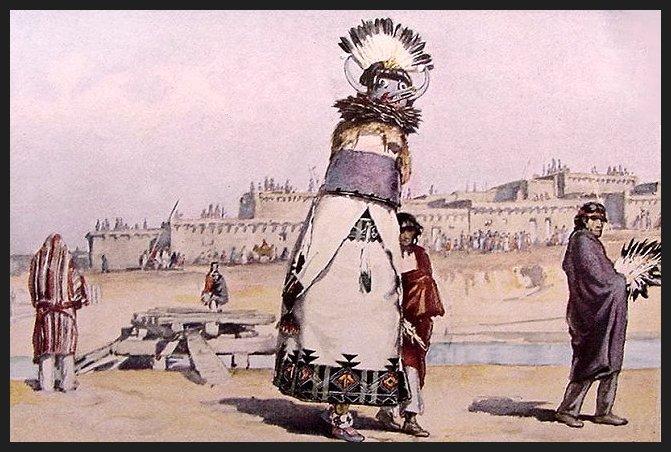
A depiction of the Shalakho effigy and dancers. Source
The Zuni Native American people of western New Mexico recognize the winter solstice as the beginning of a new year, and honor that day with a ceremonial festival and dance called Shalako. The Zuni people fast and pray for several days before the solstice, and the celebrations begin in earnest when the days begin to get longer. For four days, 12 dancers in elaborate masks engage in an elaborate traditional dance, accompanied by the "Shalako" themselves, a collection of 12-foot-tall costumed dancers with the heads of birds, seen as messengers from the Zuni gods. After the four-day-long dance and celebration ends, new dancers are chosen for the following year, and the cycle begins anew.
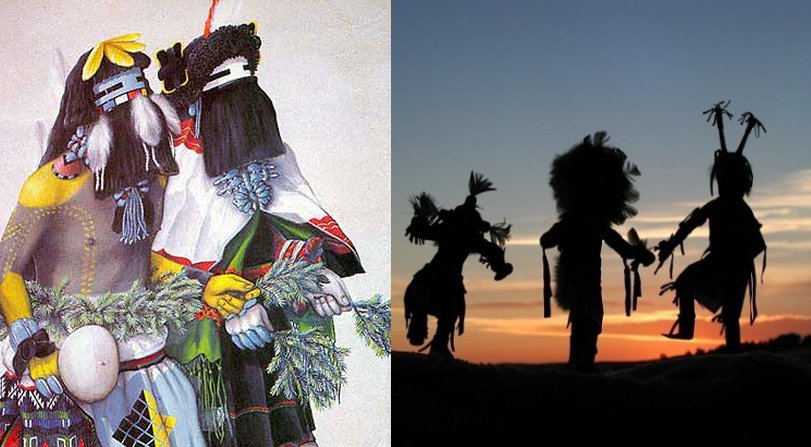
The Hopis of Arizona celebrating Soyal. Source
The nearby Hopi people, who live in northern Arizona, celebrate Soyal over the winter solstice. Rather than focusing on the daylight, Soyal celebrates the year's longest night. The Sun Chief announces the official setting of the sun on the solstice, a duty that hearkens back to the sun-watcher's traditional role in Hopi society as the governor of when crops are planted and yearly rituals are performed. At the announcement of sunset, an all-night ceremony begins, and the Hopi kindle fires to ward off the darkness, dance, and exchange gifts.
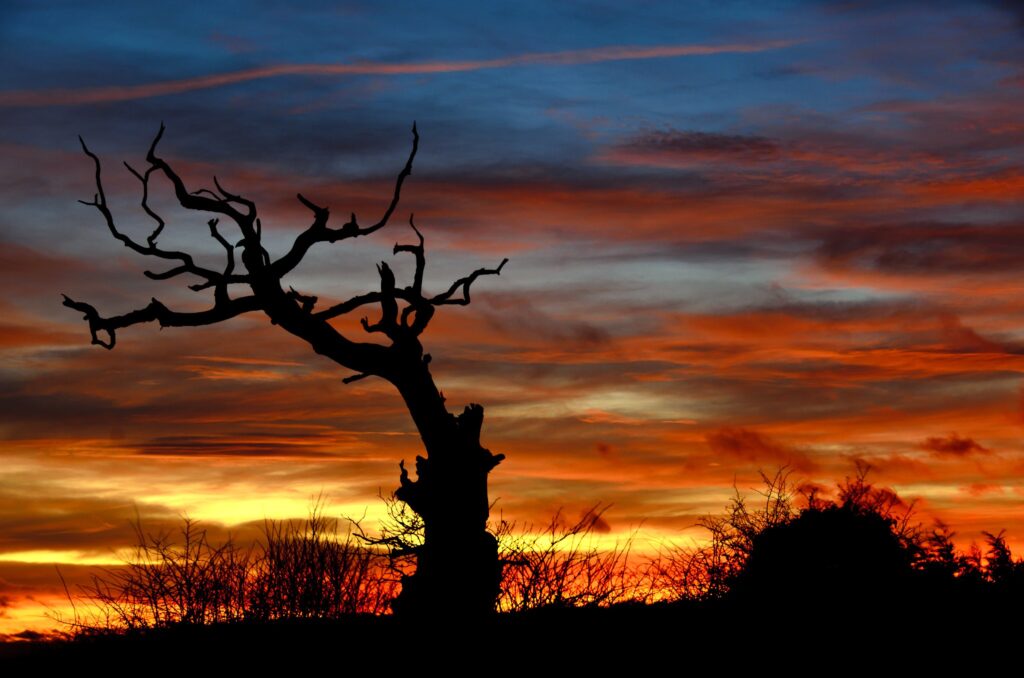
For many cultures, the winter solstice signifies rebirth and the triumph of light over dark. Source
Of course, the solstice ranks as one of the most significant festival days for a variety of peoples worldwide. Below, you'll find a primer on several of the world's solstice celebrations.
Beiwe Festival: The Sami, the indigenous people of northern Finland, Sweden, and Norway, celebrate their sun goddess Beiwe by sacrificing white reindeer to ensure the sun returns to their region the following year.
Brumalia: The ancient Romans celebrated their gods Saturn, Ceres, and Bacchus for a month, traditionally from November 24th until the beginning of Saturnalia. This holiday traces its roots from the older Greek festival of Lenaia.
Chawmos: The Kalash people in Pakistan celebrate Chawmos, a two-week-long event that culminates with the winter solstice, signifying the new year. The event celebrates the end of work in the fields for the year, and Chawmos celebrations include feasts, dances, music, and animal sacrifice, as well as rituals whereby some female members of the society select their bridegrooms.
Inti Raymi: The people of the Inca Empire held one of their most significant celebrations in late June, as their Southern Hemisphere location means the seasons are flipped for them. Inca descendants in the Andes still celebrate Inti Raymi, which venerates the sun god and includes music, colorful costumes, and feasts.
Karachun: Though it takes place around the solstice, this Slavic, pagan holiday hews closer to our version of Halloween. As dark and evil spirits are at their most powerful during the longest night of the year, Karachun is a time to light fires, gather with family, and organize feasts in honor of deceased loved ones.
Lohri: The Punjab people in northern India celebrate Lohri on January 13. Though it's a few weeks past the solstice, Lohri marks the passing of winter and the returning of longer days, and people gather to light bonfires and enjoy traditional foods.
Saturnalia: One of the largest Roman festivals, Saturnalia honored the god Saturn with sacrifices, banquets, feasting, a carnival atmosphere, and a reversal of many social norms. Gambling (usually illegal) was permitted, and masters provided their slaves with seats and service at the table.
Şeva Zistanê: Another winter solstice holiday that calls to mind American Halloween, Şeva Zistanê is celebrated in the Kurdistan region in the Middle East. This holiday represents the triumph of light over darkness, and families gather to feast and play games, while children are given sweets.
Yalda: Also known as Shab-e Chelleh, the "night of forty," Yalda is an Iranian winter solstice celebration where friends and family gather to eat, drink, and read traditional poetry until well into the night. On Yalda, red fruits like pomegranates and watermelon are eaten, as the color symbolizes the rising sun and renewed life.
So whether you're celebrating Christmas, Hannukah, Kwanzaa, Saint Lucy's Day, or Shogatsu, we hope you have a happy and healthy holiday season!
By using this website you are agreeing to our Cookie Policy.